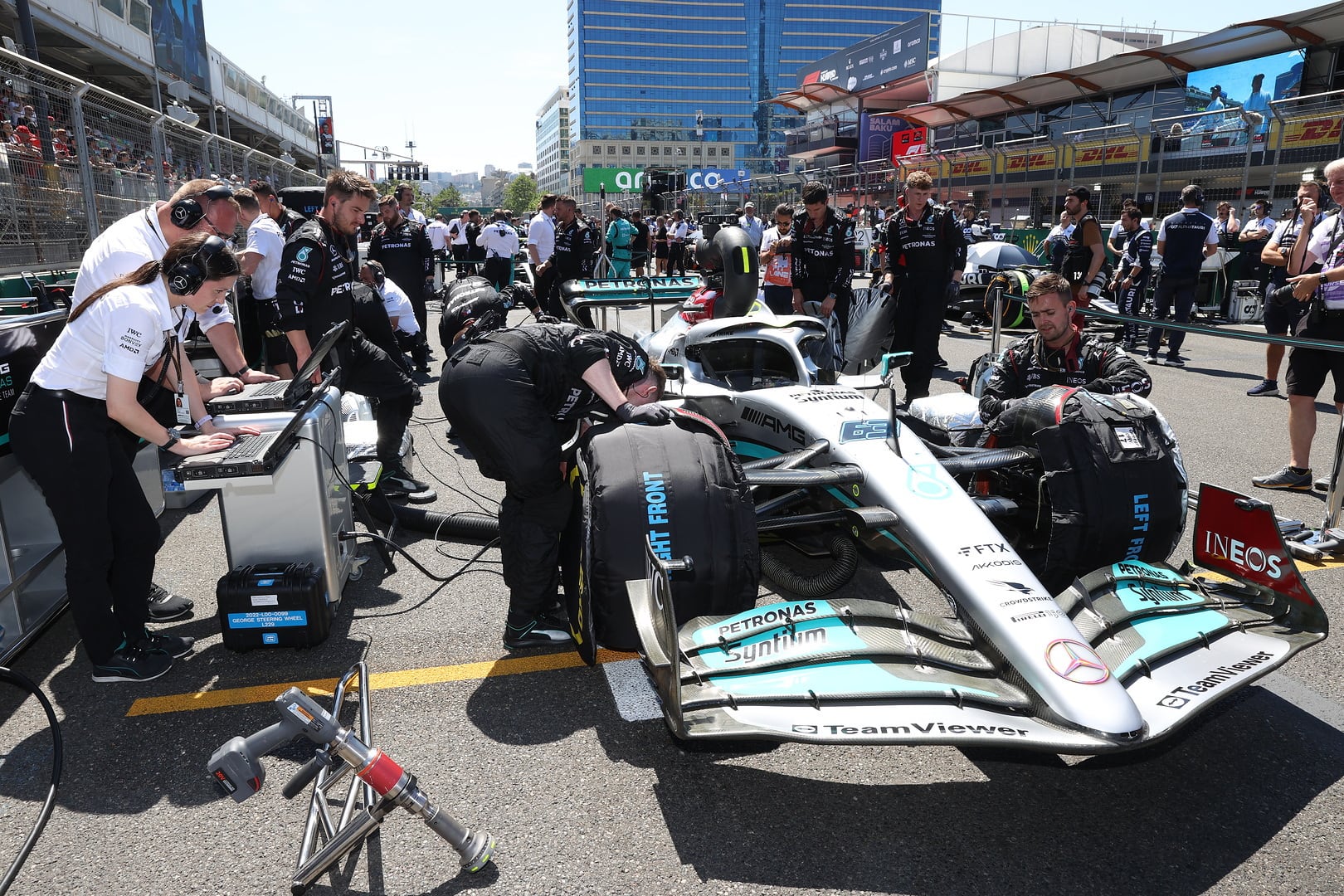How Much Data Does An F1 Car Generate?


In a world where track time is limited and technology continues to evolve, data is becoming more and more relied upon in Formula One. But how much data does an F1 car generate across a race weekend, and why is it so important?
Mercedes engineers Evan Short (Team Leader Trackside Electronics Systems), Chris Nelson (Trackside Control Systems Engineer), Christine Steven (Lead Electronics Development Engineer) and Daniel Boddy (Trackside and Technical Support Manager) explain this impressive technical area of F1 in more detail…
Where is F1 data generated from?
A variety of sources are used to generate data from our Formula One cars and tools, primarily sensors on the cars themselves. Those can be measuring anything from physical quantities like temperatures and pressures, through to things like system operations such as the gearbox or ERS units.
Those sensors are physically connected either through an analogue system to the Electronic Control Unit (ECU) which runs the entire car, or through a series of CAN buses around the car that bring information back to the central unit. CAN stands for Controller Area Network and is an automotive standard for network buses which connect multiple devices. There are 17 separate CAN buses on a car in its typical configuration, each communicating with many different devices. For example a pressure sensor might broadcast information on the bus and any interested ECUs could listen in and use the information.
During a race weekend, there can be over 250 sensors on the car. Teams divide these into three categories: control, instrumentation and monitoring. All of them deliver pressure, temperature, inertial and displacement data and are embedded into all systems on the car.
Their size varies depending on their function and type, but most of them are very small and light to not impact the weight and performance of the car. Many are not visible from the outside, although a few are, if you look closely, like the small thermal imaging sensors on the front wings.
How much data do F1 cars generate?
The short answer is, a lot! Across a race weekend, the total amount of data generated per car, including video and ancillary information, is over 1 terabyte and this increases substantially (by two or three times) once teams do the necessary post-processing of some of the data during or after the event.
If you are talking about the exciting bits of data that are generated live by the car while it’s running, the figure is more like 30 megabytes per lap, but it can be two or three times more once the car returns to the pits and the data is offloaded using the “umbilical” physical connection.
But that’s not all: back at the factory, a huge amount of data is also generated, whether that’s on some of our state-of-the-art tools and equipment such as the dyno, simulator, the wind tunnel. But also smaller areas or individuals post-processing their own information in their specific areas.
Of course, some of the data generated at the track needs to be sent back to the factories and this is no easy job, particularly with the vast amounts of data generated trackside. Live data such as car telemetry is important for the team in the Race Support Room back in Brackley to analyse and review.
At European races, the data can be received within 10 milliseconds, so almost instantaneous. But for flyaways such as Australia (over 10,000 miles away) or Japan (around 6,000 miles away), the data takes around 300 milliseconds to send. Still incredibly quick, but a slight delay compared to races closer to home.
Offloading the car data and larger files takes a long time but it’s a priority for our IT team to get it sent back to the factory as quickly as possible, which is usually expected before the car goes out for its next run. Across a recent race weekend such as Mexico, roughly 11 terabytes of actual data were transferred backwards and forwards between the factories in Brackley and Brixworth, and the trackside team.
What happens to the data once it’s been generated?
Given the lack of testing time in F1, you cannot head back out on track and repeat a test, so the pressure is on to get it right the first time and the same thing applies to the data – we want to get the right data in the limited opportunities we have, so we can extract the most learnings from it.
Once the data is gathered from the car, it’s synchronised so we know what’s happening at the precise time on each of the sensors. It is then encrypted and transmitted back to the garage through our telemetry system – which is a common system used across all teams.
Many people trackside utilise software called ATLAS – from McLaren Applied – to analyse and review data, either live over a race weekend trackside and at the factory, or in retrospect. The drivers are always keen to learn more about their performance, so they will spend time after each session and at the end of each day reviewing data, looking at how they compare to their team-mate, reviewing braking data and corner speeds.
The engineering groups for each driver will also be busy reviewing and delving into the data, to see what nuggets can be found, to make the driver and car even faster for next time. Sometimes the vast amounts of data can be overwhelming, but that’s also an incredible engineering challenge: prioritising the information you need to analyse and reviewing the right data, to learn as quickly as possible.
Video Feature: How Much Data Does an F1 Car Generate?
Information for this article was provided via Mercedes AMG Petronas press release.





